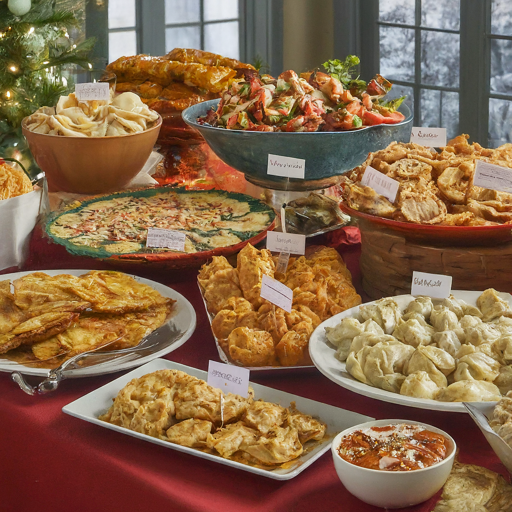Tips for Enjoyable and Risk-Free Holiday Meals
With the holidays just around the corner, we’re all looking forward to joyful get-togethers, cozy moments, and tasty meals. But in the midst of all the excitement, it’s important to keep food safety in mind to avoid any unexpected issues that could spoil the fun.
 width:836px;height:auto"/>
width:836px;height:auto"/>Understanding Foodborne Illness
Foodborne illnesses, commonly known as food poisoning, can lead to unpleasant symptoms such as vomiting, diarrhea, and flu-like discomfort. These symptoms typically manifest within hours to days after consuming contaminated food or beverages.
Prioritizing Food Safety
Cleanliness is Crucial
A foundational principle of safe food preparation is maintaining cleanliness throughout the process. Begin by thoroughly washing your hands with warm, soapy water for at least 20 seconds before and after handling any food items. This simple step helps prevent the spread of harmful bacteria.
Additionally, ensure that all food-contact surfaces, including cutting boards, utensils, and countertops, are cleaned with hot, soapy water after each use. Rinsing fruits and vegetables under cool running water, using a produce brush if necessary, helps remove any surface dirt or contaminants. However, it’s important to avoid rinsing raw meat and poultry before cooking, as this can lead to cross-contamination.
Separation Prevents Cross-Contamination
To minimize the risk of cross-contamination, it’s essential to keep raw eggs, meat, poultry, seafood, and their juices separate from other foods throughout the entire food preparation process. This includes during shopping, storage, and meal preparation.
Consider using separate cutting boards for raw meats and other foods to prevent the transfer of harmful bacteria. When storing raw fruits and vegetables, keep them separated from raw meats and seafood, and use separate kitchen utensils for handling different types of foods. Avoid placing cooked foods on unwashed plates that previously held raw eggs, meat, or poultry to prevent cross-contamination.
Also Read: Solo Female Traveler’s Guide to Adventure and Safety
Thorough Cooking Ensures Safety
Proper cooking is key to ensuring that food reaches a safe internal temperature to kill harmful bacteria. Visual cues such as color are not always reliable indicators of doneness, so it’s essential to use a food thermometer to accurately measure internal temperatures.
For example, poultry, including turkey, is considered safe to eat when it reaches an internal temperature of 165°F. When reheating sauces, soups, and gravies, bring them to a rolling boil to ensure thorough heating. Cook eggs until both the yolk and white are firm, and refrain from consuming raw cookie dough or batter containing raw eggs to reduce the risk of foodborne illness.
Prompt Refrigeration Prevents Bacterial Growth
Refrigerate perishable foods, leftovers, and takeout items within two hours to inhibit the growth of harmful bacteria. Maintain your refrigerator at or below 40°F and your freezer at 0°F, using appliance thermometers to monitor temperatures regularly.
When thawing frozen foods, do so safely in the refrigerator, under cold running water, or in the microwave, and cook them immediately afterward. Trust your instincts and avoid consuming food that looks or smells questionable – when in doubt, it’s best to discard it to avoid the risk of foodborne illness.
Also Read: 10 Ways to Ensure Safe Online Shopping
By adhering to these simple yet essential food safety guidelines, you can ensure that your holiday meals are not only delicious but also safe for everyone to enjoy. So as you gather with loved ones this holiday season, remember to prioritize safety alongside the celebration, ensuring a joyous and illness-free experience for all.





Comments are closed